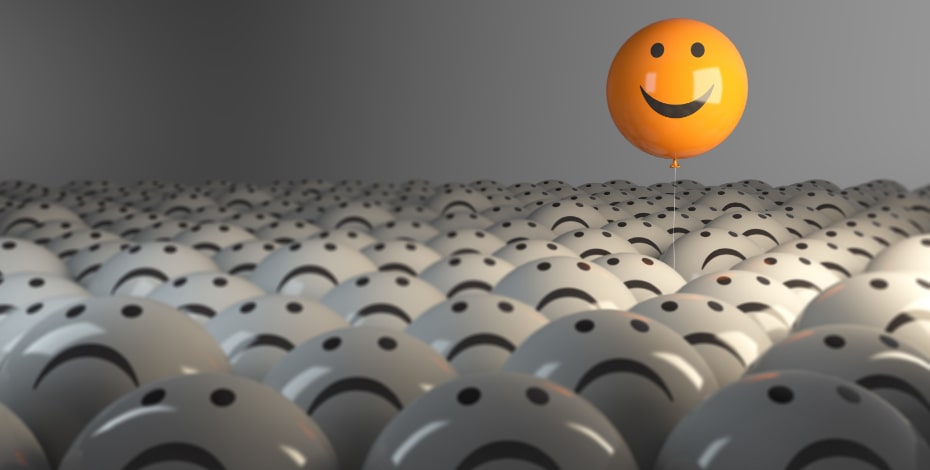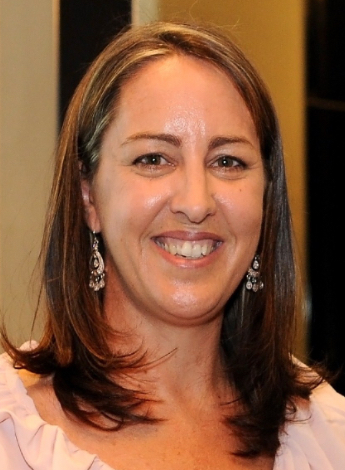
Getting to the heart of cardiac rehab

With advances in technology and treatment, survival rates for people with heart disease are improving. For physiotherapists working with these patients, the delivery of both exercise programs and education is critical. To mark National Heart Month, 1–28 February, InMotion looks at a year of huge changes in cardiovascular rehabilitation brought about by COVID-19 and the implications for future practice.
Of all the patient groups vulnerable to COVID-19, perhaps some of the most at-risk during the coronavirus pandemic were those with heart disease.
While many people know that COVID-19 affects the respiratory system, it may come as surprise to some that the virus also has a direct impact on the heart by potentially causing acute inflammation and injury to the heart muscle.
For those with existing heart disease, this can lead to severe and potentially life-threatening symptoms.
For people enrolled in cardiac rehabilitation when the pandemic hit in March last year, the impact was immediate and brought about a new way of service delivery that may forever change the cardiac rehabilitation landscape.
At the height of the pandemic in 2020, stories abounded of patients with heart disease being reluctant to attend the hospital or visit their treating health practitioners for fear of contracting the virus.
There were anecdotal stories of people having heart attacks at home and not calling an ambulance, and of people critically unwell with heart failure choosing to stay at home instead of risking contracting the virus.
Likewise, there were stories of patients determined to ‘make do’ with what medication they had rather than leave home during lockdown to have scripts filled.
These stories are familiar to Julie Adsett, APAM, who is a physiotherapist with the Royal Brisbane and Women’s Hospital’s Heart Support Service in Queensland. Julie experienced the impacts of that fear among her own patients, many of whom were admitted to hospital in recent months, once the perceivable risk diminished.
‘We’ve seen quite a bit of that lately, people who unfortunately were too scared to see their doctors as frequently as they normally would during COVID-19 and as such their heart disease has now worsened,’ Julie says.
'Similarly, we’ve seen so many older people who have functionally declined during this time through being less active because of spending more time at home.‘
In her role, Julie works as part of a multidisciplinary team that manages people with heart failure, from first diagnosis through to the end of life.
These are vulnerable patients who on a day-to-day basis face many fears and stresses. Adding a pandemic into the mix certainly made for more challenges.

‘I think COVID-19 helped us to realise that we need to become more creative. It highlighted that we need a variety of ways in which we can support patients, particularly during times they’re not able to come to the hospital. Remote delivery of care became really important,’ Julie says (pictured left).
‘During the peak COVID-19 months, telerehab found a new home in cardiac rehab. It was challenging but I think people realised that it can certainly be done.’
COVID response
'In response to the pandemic, many outpatient heart failure and cardiac rehabilitation programs across the country rapidly transitioned to alternative delivery models such as video-based telerehab programs as well as text messaging and phone apps.
'And while there remains much work to be done in evaluating the effectiveness of these programs, the swift transition has opened up a number of opportunities for clinicians who work in this space.
‘During the peak COVID-19 months, people weren’t able to attend their centre-based cardiac rehab program. We had to very quickly come up with alternatives so these patients could still receive the care they needed.
'What was wonderful to see was how physiotherapists from around the country all worked together to support each other and to problem solve during this time.
‘For many clinicians, and especially for those in isolated roles, there were a lot of hurdles. It was a real team effort, not just in the cardiology space but we often worked with our pulmonary rehab colleagues as well.
'During this time, clinicians were implementing and delivering phone-based and telerehab programs, and providing emotional support to patients who were terribly scared and isolated.
'We had to be pretty creative at times, providing appropriate exercise advice, managing people’s symptoms and getting medication scripts to where they needed to be. These were all things that had to be done without clinicians having any physical contact with patients.
‘It made people think outside the box. For many patients, we were able to dispatch blood pressure machines which not only helped with medication changes but also assisted our exercise prescription.
'We discovered that there was so much we could do, so there were many positive things that came out of this time.’
Cardiorespiratory physiotherapist Rita Hwang says COVID-19 has provided physiotherapists with an opportunity to experiment with providing telerehabilitation as a substitute for centre-based rehabilitation during the suspension of face-to-face programs, and the opportunity to integrate telerehab into routine service delivery.
Rita is a physiotherapist with the Heart Recovery Service at the Princess Alexandra Hospital in Brisbane and has played a role in many research projects within that service.
She completed her PhD in 2017 on heart failure telerehabilitation, and has been keenly tracking its use throughout the pandemic.

‘Telerehab has the potential to distribute physiotherapists’ expertise to more patients across a wider geographic area. It can be used to supplement existing services and expand services to meet the needs of new patients,’ Rita says (above, left).
‘This can be helpful in rural and remote regions that have difficulties in accessing traditional physiotherapy services, but will also benefit metropolitan areas by removing transport barriers.
‘It is an innovative approach enabling patients to exercise in the home while maintaining real-time communication with healthcare professionals.
Patients can demonstrate how they perform the exercises via videoconferencing and the physiotherapist can check the accuracy of the exercises performed, modify and progress them accordingly through a practical demonstration.
'It is also possible to generate discussions through online tools such as screen sharing and collaborative drawing.’
Rita, who is also a lecturer at the School of Health and Rehabilitation Sciences and an adjunct fellow at the Centre for Online Health at The University of Queensland, says telerehabilitation programs have been shown to be feasible and effective in people with heart failure (Piotrowicz et al 2010) and coronary heart disease (Frederix et al 2015).
And the extraordinary situation of the COVID-19 pandemic has led to the rapid adoption of telehealth globally, as this delivery model may improve access and minimise cross-infection risk to these patients.
‘Many physiotherapists have used telehealth for the first time, and patients have had the opportunity to receive care directly into their homes. This experience has highlighted both the benefits and the challenges of delivering care via telehealth.
'For instance, providing care a telehealth requires additional skills and appropriate support,’ Rita says.
Preliminary results from the recent Telehealth by Physiotherapists in Australia during the COVID-19 Pandemic: Interim report October 2020 (australian.physio/telehealth-update) have highlighted that more than 80 er cent of physiotherapists didn’t have training before offering telehealth, with 47 per cent treating less than 10 patients before the pandemic via telehealth.
‘This reflects a highly adaptable workforce, despite the limited training and experience in telehealth. To ensure success of telehealth into the future, it would be important to provide ongoing support and training to ensure physiotherapists develop the necessary skills to deliver telehealth services.
'Telehealth provides another tool in our toolbox and offers a flexible delivery model. This may enable patients to choose what is best for their needs, in conjunction with our clinical reasoning. There will always be a place for in-person care, but demand for telehealth is rising,’ Rita says.
For physiotherapy clinician and researcher at the University of Sydney, Professor Julie Redfern, the impact of COVID-19 as a practitioner in community health on the Northern Beaches of Sydney (an area subject to a COVID-19 lockdown in late December) resulted in the creation and rolling out of a text messaging service support program for people who had been attending cardiac and pulmonary rehabilitation.
The service was expanded to include breast cancer survivors to enable continuity of their management and support.
Deeply concerned about the lack of services for cardiac and pulmonary rehabilitation patients during the pandemic, Julie (below, left) and her team worked tirelessly for two weeks to rapidly set up the text messaging service for this patient cohort.

The team toiled day and night to get the legal requirements passed and to have a rapid ethics approved to enable the service rollout.
They consulted with stakeholders the Lung Foundation, the Heart Foundation, Breast Cancer New South Wales and the Cancer Council to use social media and develop strategies to get people on board.
‘I think we’ve now got 1200 patients who receive that program, paid with some spare money that I had. We had no funding. In fact, we applied for funding and didn’t get any,’ Julie says.
‘So we just ran that all on the back of our own efforts, with the bit of money that we had.’
The texting service featured COVID-19 content in line with government recommendations as well as advice around physical activity, nutrition and mental health.
The texts were tailored to suit particular conditions; for example, those with a respiratory disease were offered advice about how to continue to manage their physical activity and their levels of fear, as well as being offered support and provided with links to relevant services.
'So it was about letting people know that the Lung Foundation had a support service available, and this is how you can find out about it.
'We offered all sorts of different tips and practical advice but all pitched very positively, all about support, all about making people feel like they still had some connection even though the programs weren’t physically available,’ Julie says.
While patients have overwhelmingly praised the service, its success in terms of outcomes is in the process of evaluation during this continuously unstable and in flux pandemic environment.
For now, the service will continue and perhaps may become a part of routine rehabilitation treatment in the post-pandemic world. But just who will fund the project remains an unanswered question.
‘These things are so simple, and they cost a few dollars per person, but it’s all about who’s going to pay for it,’ Julie says.
Julie, who is also deputy director of the Westmead Applied Research Centre at the University of Sydney, says she moved some of her clients to a telehealth platform during the height of the coronavirus pandemic last year, at a time when the APA had successfully lobbied to have public and private telehealth funded (australian.physio/2020advocacynews) as well as being granted an extension of MBS and DVA funding beyond the original September 2020 end date.
‘For probably three months I did much of my service and care by telehealth, and I thought that seemed to go quite well,’ Julie says.
‘Then I began doing some face-to-face again, and then things got a little bit messy again when there was a little bit of a spike in New South Wales and Victoria, so I went back and did a couple of weeks of the telehealth again. Telehealth is great, and I think that is a real way forward for everybody.
‘However, I am nervous about pushing out too much digital and telehealth. I think telehealth consults have a place.
'I’m very involved with many, many research projects in many areas of digital health, and I wouldn’t say the effectiveness data that’s coming out of clinical trials is overwhelmingly favourable.
'Digital health interventions are effective and engaging for some, but not everyone. Ideally a flexible and patient-centred approach is needed. There is no “one size fits all solution”.
'I believe more research is needed, and we need to be cautious about effectiveness and conflicts of interest. Thinking we can just replace face-to-face with digital strategies is not necessarily the way forward; rather, I see the options as complementary and perhaps a composite is ideal (COVID-dependent of course).
‘However, there are opportunities because one of the major problems with traditional cardiac and pulmonary rehabilitation is that most people, or many people, who need to attend don’t attend for a variety of reasons.
'A lot of that is related to the physical requirement of being in a certain place at a certain time when people work, or they don’t have transport. So opening up opportunities and highlighting that is an important area that we’ve talked about and done a fair bit about.
'But I really don’t think we are addressing it as well as we could be.’
History of heart rehab
Before the 1950s, people who had a heart attack were put on complete bedrest for up to a year, with no physical activity, as it was feared physical activity could trigger another episode.
Julie Redfern says eventually it was understood that patients who had a heart attack did have the ability to sit in a chair or walk to the bathroom without triggering another heart attack.
‘But in any case, people were still in bed for many weeks or many months after a heart attack. And there wasn’t any heart surgery at all, basically,’ she says.
‘So that’s why we introduced the concept of “rehabilitation” where people did need rehabilitation because they had the effects of immobility for so long.
‘Despite being more than 50 years ago, that’s when cardiac rehabilitation started, and patients would move to a rehabilitation hospital and live there and start to walk and build up their strength. That evolved to outpatient services and became more detailed and included education.
'Then, in the ’70s and ’80s, we started to learn about Framingham risk factors and management of other behavioural factors. We also started to see bypass surgery occurring but initially extremely ill patients would be in intensive care for many weeks and again, they needed rehabilitation.
‘Since then we have seen proliferation of percutaneous intervention and less intensive care after bypass surgery. We have also experienced enormous social and cultural change where working and family lifestyles are very different today compared to 30–40 years ago,’ she says.
Over time, the role of physiotherapists in treating cardiac patients has changed, particularly with the emergence of new technologies and medical advances. Much has changed in cardiology in the last 20 years, says Julie Adsett.
‘For example, several years ago coronary artery bypass grafting was the most common surgical intervention for people with coronary artery disease. Nowadays, many patients can be managed with coronary stenting, which is usually a day or overnight procedure,’ Julie says.
‘Likewise, some heart valves are also now able to be repaired or replaced non-invasively. These procedures mean that not only do people have fewer complications, but also that more elderly people or those with high surgical risk are now able to benefit from these procedures.
'These patients are now able to live longer with fewer symptoms, making their quality of life so much better.’
Technological improvements in devices such as defibrillators have also impacted on patient recovery.
‘Defibrillators are now able to do a whole lot more than they used to be able to do. In patients with heart failure for example, some devices are able to pace both sides of the heart, thus improving the pumping function by having both sides of the heart working synchronously together.
'Some devices can also tell us when somebody is fluid overloaded. Using bioimpedance, this technology is able to alert clinicians at the hospital that the patient needs treatment, even before they have any symptoms.
Technology is certainly becoming more commonplace in clinical practice and has the potential to significantly improve patient outcomes.’
Julie says that because people are living longer with existing disease, we now view heart disease as a chronic condition. Because of its prevalence and complexity, physiotherapists play a key role in managing these patients.
‘A lot of what we do is about providing guidance and support. For other physiotherapists who might see these patients in private practice, or who are seeing them for other reasons, we all have a part to play to assist people to bring about lasting and meaningful change to their lives.
‘We often think about exercise in the context of improving function and enabling people to walk further, but it’s so much more than that.
'Exercise impacts upon the disease process itself, so to deny people opportunities to exercise is actually denying them care,’ Julie says.
‘We all need to be encouraging people to be active in ways that are sustainable for that person, and we can all be assisting people to improve their heart health by providing education about appropriate diet, smoking cessation and managing symptoms.
Misconceptions about heart disease and exercise, says Rita Hwang, could be considered a barrier to physiotherapists engaging in cardiac rehabilitation. One of the common misconceptions is that the patient may be too frail to exercise.
Rita says this is refuted by research and clinical experience, where stable patients who are frail and present with low exercise capacity often have more to gain from exercise.
‘For instance, stable outpatients with heart failure and atrial fibrillation were shown to gain similar benefits with exercise training, despite being older and having lower baseline exercise capacity (Luo et al 2017).
'There’s also a discordance between left ventricular ejection fraction and functional capacity, so it is important to undertake an exercise assessment and individualise the exercise prescription.
‘Education can help to address some of these misconceptions and further research can also help to fill in the knowledge gaps.
A working group identified some of these exercise knowledge gaps in heart failure and made six recommendations including better understanding of the basic mechanisms of exercise intolerance, better knowledge of different phenotypes, better exercise outcome measurements, improvement in adherence, optimisation of training regimens and combination of training with other lifestyle interventions (Fleg et al 2015).’
The way forward
In the wake of COVID-19, many cardiac and pulmonary rehabilitation services are now working to embed telerehab into existing services.
That’s a challenge, says Julie Adsett, because when you are balancing inpatient and outpatient caseloads and delivering a mix of centre-based and home-based models, it can be difficult to have the time to be ‘everything to everybody’.
‘I think we all recognise that telerehab has a place, and it will probably be with us henceforth, it’s just trying to work out how to best fit it within our services,’ Julie says.
‘We still have a few things to work out but physiotherapists are great problem solvers.’
References
1. Piotrowicz E, et al. Eur J Heart Fail. 2010;12:164-171.
2. Frederix I, et al. J Med Internet Res. 2015;17:e185.
© Copyright 2025 by Australian Physiotherapy Association. All rights reserved.





